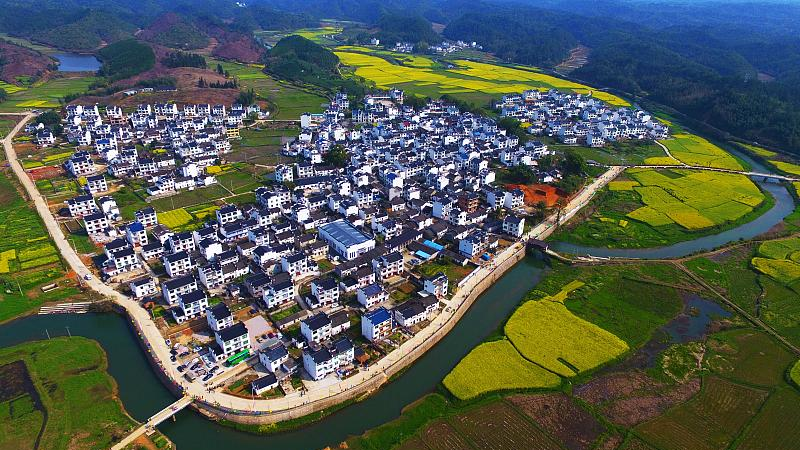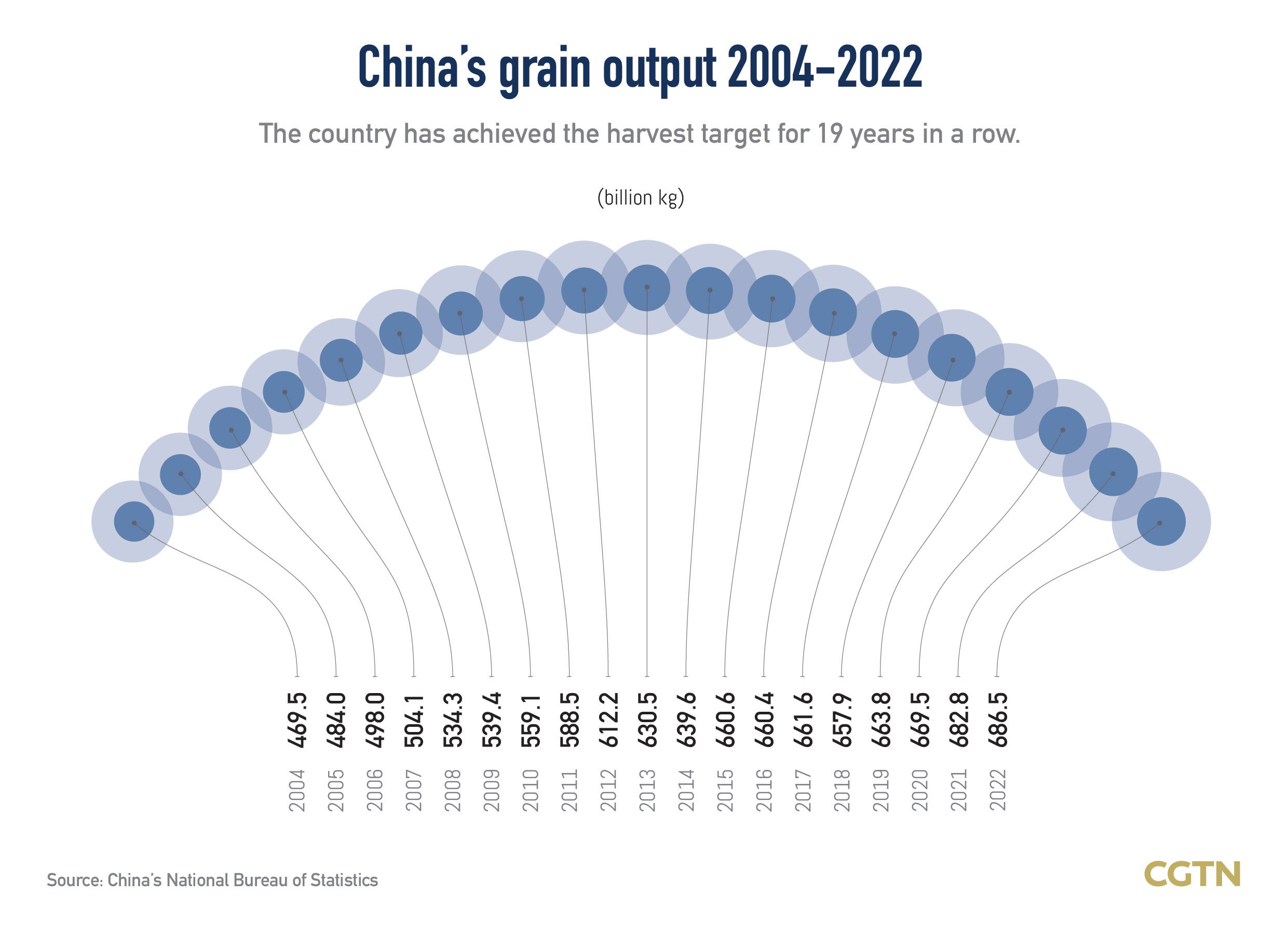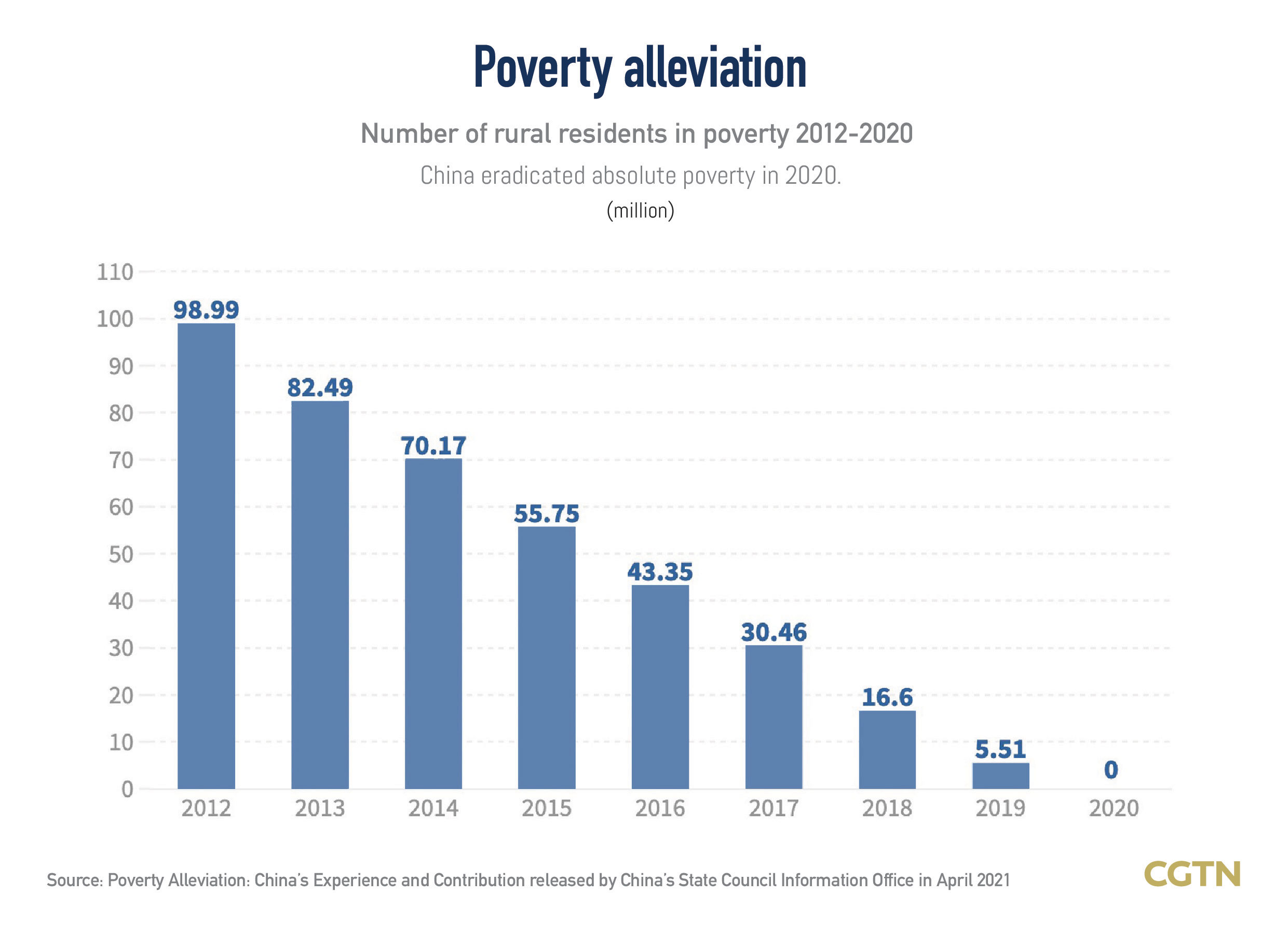
An aerial photo of Huangsha Village, Zhenzhu Township, Wuyuan County, east China's Jiangxi Province, March 24, 2019. /CFP
An aerial photo of Huangsha Village, Zhenzhu Township, Wuyuan County, east China's Jiangxi Province, March 24, 2019. /CFP
China unveiled its "No. 1 central document" for 2023 on Monday, outlining nine tasks for comprehensively promoting rural vitalization.
The document notes that as China faces the heavy task of building a modern socialist country in all respects amid a rapidly changing world, it's essential to stress the bedrock of "agriculture, rural areas and farmers," promote rural revitalization, accelerate agricultural and rural modernization, and build China into an agricultural powerhouse.
As the first policy statement released by China's central authorities each year, the document is seen as an indicator of policy priorities. Work on agriculture and rural areas has been high on the agenda for 20 consecutive years since 2004.
Leveraging science and technology
The document not only details major tasks for comprehensively promoting rural vitalization, but also puts forward specific arrangements for accelerating the building of China's strength in agriculture. One of the most important tasks is to strengthen agriculture through science and technology.
It stresses the need to promote breakthroughs in key agricultural core technologies, establish agricultural laboratories and innovation centers, strengthen basic long-term observation and experiments in agriculture, accelerate research and development of large-scale intelligent agricultural machinery and equipment, invigorate the seed industry, and build a sharing mechanism for accurate identification and evaluation of seed resources.
The document also calls for promoting the green development of agriculture, establishing a collection, utilization and treatment system for agricultural waste and a monitoring system for agro-ecological environment protection, introducing regulations on compensation for ecological protection, strictly enforcing the moratorium on fishing, and stepping up efforts to protect and restore grasslands.
The document also emphasizes the importance of agricultural infrastructures, saying the prerequisite of it is to keep protecting cultivated land, strictly control the conversion of cultivated land to other agricultural land and increase the utilization of abandoned farmland, so that the quantity of cultivated land can be ensured. Besides, the country should also advance major water conservancy projects, accelerate national water conservancy network construction, and strengthen the country's ability to prevent and mitigate natural disasters for agriculture through meteorological observation and monitoring of diseases and pests.
To ensure the stable production and adequate supply of grain and other important agricultural products, the document underlines efforts to keep annual grain production over 650 billion kilograms, expand the acreage of soybeans and oil crops, and develop agriculture with modern facilities.

Poverty alleviation achievements
In terms of consolidating and expanding poverty alleviation achievements, the document stresses the prevention of a large-scale return to poverty, calling for efforts to accelerate development in poor areas and narrow the income and development gaps between rich and less affluent regions.
It also notes that it's vitally important to cultivate industries and businesses that leverage local strengths. The country will strive to ensure that more than 30 million people who have shaken off poverty are employed and more than 60 percent of the central government subsidies for rural vitalization are used to develop local industries, according to the document.
Moreover, it also highlights the importance of government policies for poor people and poor areas. The policies include monitoring and evaluating the results of development in key poor counties, doing a solid job in providing credit to people who have just been lifted out of poverty, and increasing financial support for assistance projects in accordance with market-based principles.
Deepening coordination between the economically developed counties (cities and districts) in the eastern region and the counties in the less-developed western region is also the key to consolidating the achievements of poverty alleviation. In that case, counties that have just lifted themselves out of poverty can develop more labor-intensive industries that transferred from eastern regions.
In the transition period after China eradicated extreme poverty as planned in 2020, the country will work harder to study mechanisms to provide regular assistance to low-income rural people and less-developed areas, the document says.

Improving rural governance system
With regards to building a beautiful and harmonious countryside, the document underscores solid work on improving the rural governance system.
It stresses strengthening the political and organizational functions of rural grassroots Party organizations by carrying out training for rural Party members, improving their leadership abilities, and strengthening their responsibility for rural revitalization. To ensure that, the supervision of village officials is essential. There will be regular inspections to crack down on corruption and correct work style problems, according to the document.
The development of rural personnel is also crucial for rural vitalization. The government shall organize and guide talents in education, health, science and technology, culture, social work, and other sectors to serve at the grassroots level, and support the training of local talents in urgent need. It will also implement programs to train farmers, develop vocational education for rural areas, and deepen the integration of industry and education as well as cooperation between schools and enterprises.
The government will keep improving the incentive mechanism for urban professionals to provide regular services in rural areas and guide them to take part-time jobs or leave their jobs to start businesses in rural areas. The free training programs for rural medical students and teachers will also be kept in place and consolidated, according to the document.
It's also crucial to strengthen rural capacity for basic public services, especially to improve weak links. To this end, the document calls for promoting the balanced development of compulsory education in rural areas, implementing the policy of living allowances for rural teachers, pooling medical and health resources, strengthening the professionalization and standardization of rural doctors, and improving medical care for key groups such as the elderly, the young, the sick, the disabled, and the pregnant.
At the same time, the document says rural social work services should be further deepened. In rural areas, the construction of senior service centers should be accelerated, in which daily care, mutual care and dining halls for the elderly should be provided, and protection of rural minors should also be strengthened.